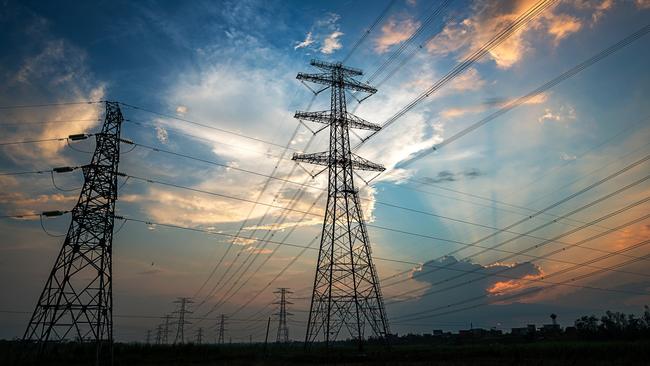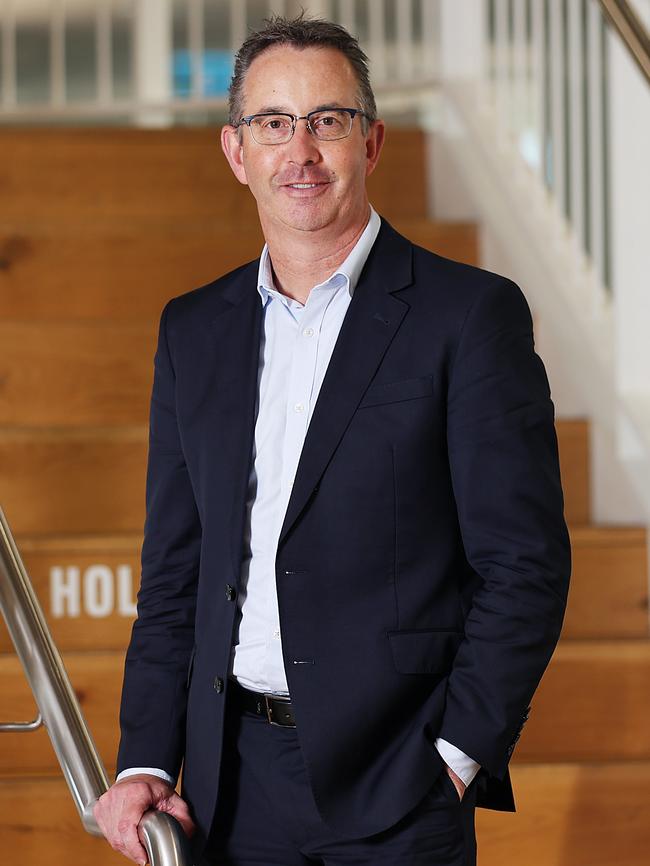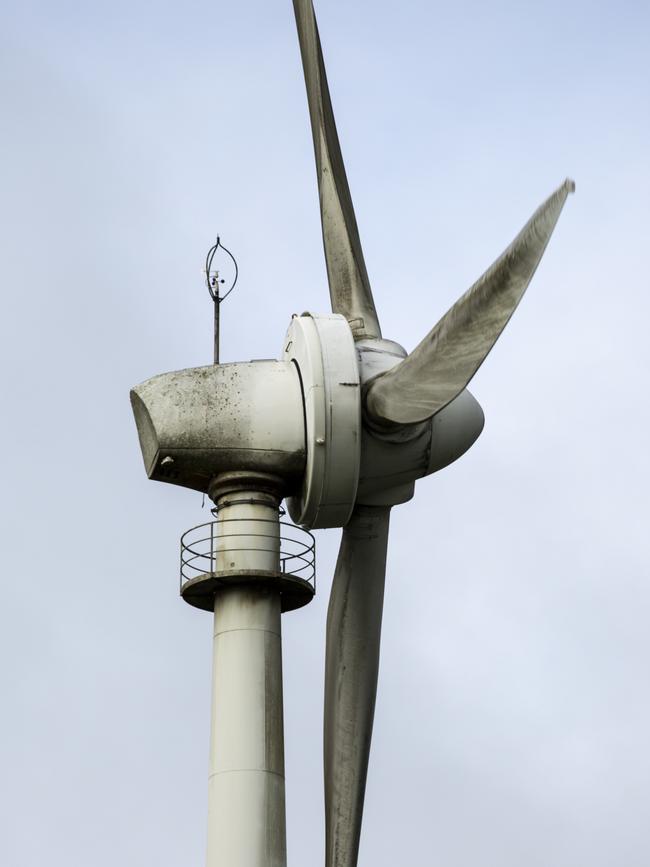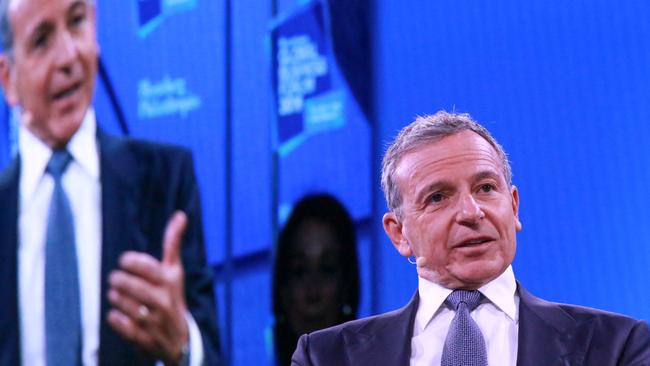
With each one came a new direction in how the nation’s biggest owner of coal-fired power stations planned to navigate the green shift. And each false start further eroded confidence, putting it further behind rivals in the multibillion-dollar transition race.
AGL was buffeted around last year, first becoming subject of a low-ball takeover led by tech billionaire Mike Cannon-Brookes. Then it suffered a share crash as a planned split of its renewables and coal business was scuttled, forcing a boardroom cleanout. This allowed Cannon-Brookes to tighten his grip and become a major agitator, forcing AGL to fast-track its renewables push. In November, Cannon-Brookes secured a stunning win by getting four of his directors on the board.

But Nicks said he was very much about looking ahead and the AGL’s December half results – headlined by a $1.07bn loss – marked an “absolute turning point” after a rocky year.
“We’ve got through what was a very tough last year, we have a board in place, we have an endorsed strategy, we have a management team in place. There’s a real excitement bubbling through the organisation,” Nicks said in an interview.
AGL’s latest transition plan – unveiled last year – is nothing short of ambitious. It is planning to supply up to 12 gigawatts of new generation and firming capacity by the end of 2035 as it progressively exits coal. To do this it will need to spend $20bn, with half in place by the end of the decade. It doesn’t have the cash to do this on its own and will need outside partners to help it get there.
Despite the fractures at the corporate level, Nicks pointed to customer numbers increasing by more than 60,000 during the December half as well as getting strong support for AGL’s transition plans, including backing from Canberra’s green bank ARENA for a 250MW big battery at Liddell in NSW’s Hunter Valley.
“I think there’s some really positive signs,” he says. “For me, it’s about putting the past behind us, moving forward as quickly as we can to deliver on our strategy. That’s ultimately the success will get measured on.”
As AGL former chief financial officer, Nicks has been acting chief executive since September. He was named in the role little more than two weeks ago. His appointment adds to the top-level overhaul. The average tenure for AGL’s board is less than a year, remarkable for a company that is nearly two centuries old.

AGL’s headline first-half number was riddled with writedowns including more than $700m against the value of its coal-fired power stations, which would be switched off by 2035, nearly a decade earlier than planned. Meanwhile, generation earnings were off on the forced outage of a unit of the massive Loy Yang power station in Victoria.
The Albanese government’s pre-Christmas emergency intervention in the energy market, including price caps on coal and intervention on gas markets, punched another $160m hole in earnings as wholesale prices fell sharply. Wholesale prices were already starting to ease as global gas prices were coming off and a relatively mild summer helped.
Nicks has already had a full dose of energy politics and expects plenty more to come, including working with Victorian Premier Daniel Andrews’ revived SEC.
Nicks says he wants to work with all governments. But his demand is to make sure the caps and gas market intervention don’t have an impact on longer-term confidence of the nation’s energy market.
Nicks’ first full-time outing as CEO was scorched by a 10.3 per cent share slide as he lowered AGL’s profit guidance at the top end largely as wholesale energy prices have started to pull back.
The company’s earnings profile is also clearly starting to change as it pulls away from coal. The full closure of the archaic Liddell coal-fired power station is set to occur in coming months. At the same time, earnings are due to flow from the combined 300MW mega-batteries being switched on around the middle of the year in South Australia and Broken Hill, NSW.
These projects are coming onstream less than two years from the investment decision to being hooked onto the grid. Nicks says that speed highlights the quality of AGL’s infrastructure and connections and its staff. “You think about doing that across all of our portfolio, that’s where the real strength lies.”
Disney’s streaming reset
Streaming is set to become more expensive if Disney boss Bob Iger has his way.
After seizing back the reins of the world’s biggest media company, Iger has reassessed his view on economics of on-demand movies and TV shows.
The reset means the Disney+ streaming service that has wide take-up in Australia and is used by more than 100 million globally, is likely to get even more expensive for households as the media giant chases profits over subscriber numbers.

While Iger got the ball rolling on Disney+ in recent years, the seasoned chief executive suggests major media players have been too focused on a land grab in streaming at the cost of sustainable earnings. Nor should the media industry be too quick to write off linear, or traditional broadcasting, including cinema distribution, as there is still strength in this model.
Iger’s comments came as earlier on Thursday Disney outlined plans to slash its global workforce by 7000, with the aim of cutting $US5.5bn ($7.9bn) in costs over coming years. Iger returned as Disney CEO last November, less than a year after he retired, to overhaul the media company that owns franchises from Star Wars, Marvel and Pixar, after its streaming service Disney+ racked up deep losses through a global expansion.
The cost cutting is expected to also hit the budgets of Disney’s blockbuster productions too, with Iger promising everything will come under scrutiny. Filmmaking, he noted, is getting to a point of becoming “extraordinarily expensive”.
Players including Netflix have been shifting how they approach streaming. Netflix recently introduced an advertising subscription alongside its premium non-advertising version. Foxtel-backed Binge will also introduce an ad tier. Others including Disney+, Stan and Apple TV have pushed through price rises in recent months.
In Australia more than 6.1 million households subscribe to streaming services, according to figures compiled by Kantor. Households have multiple services – 3.4 on average – but the number has started to be trimmed back following a round of industry-wide price rises last year.
In the December quarter, Amazon Prime led the growth as it bundled services in with Black Friday deals. Other fast movers include Netflix on the back of the series Wednesday and Binge with House of the Dragon behind subscriber sign-ups. News Corp, the owner of this publication, has a majority stake in Foxtel, which in turn operates streaming platforms Binge and Kayo.

Disney’s latest accounts show its streaming unit covering Disney+, ESPN+ and Hulu lost $US1.1bn over the December quarter. This comes on the back of a $US1.5bn loss in the September quarter that prompted the ousting of former CEO Bob Chapek.
In an investor call Iger said streaming has delivered a “huge authority shift” from the content producer and distributor to the consumer. And this is fundamentally challenging the business model of movie and television content.
“When you think about what streaming is … it is the ultimate a la carte proposition for the consumer,” he said.
Streaming gives consumers the ability to watch programs, not channels or services.
“Because you’re signing up most cases for one month subscription, you can sign-on for one program, pay a relatively small amount of money and then end up basically unsubscribing. I think what’s going on right now is that as the linear businesses continue to erode, we’ve been basically eyes-wide open on that.”
Iger believes streaming is still the future but at current run rate it is not delivering the bottom line results that linear broadcasting has been delivering.
For Disney Iger plans to “rebalance a bit” around its streaming push, adding that linear or broadcast television and movie theatres still have substantial audiences that can provide Disney with a significant potential for profit growth.
For Disney+ subscriber growth remains the aim, but Iger is intent on chasing “quality” subscribers that are loyal rather than those that churn. The recent price rise to Disney+ only resulted in minimal loss of subscription growth.
“(That) may tell us that the promotion to chase subs, that we’ve been fairly aggressive at globally, wasn’t absolutely necessary,” Iger said.
johnstone@theaustralian.com.au








Delivering more than $1bn in losses in his first official outing, the job ahead for new AGL boss Damien Nicks is to rebuild much-needed credibility, with the energy giant up to its fourth CEO in as many years.